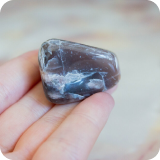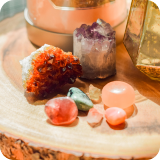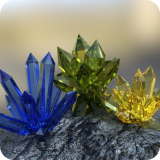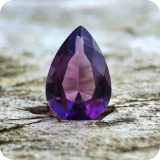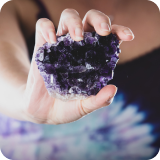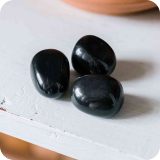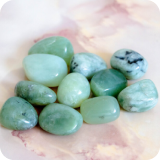- What is a Raw Stone?
- What is a Tumbled Crystal?
- Interesting Similarities and Differences in Tumbled vs. Raw Crystals
- Tips on How to Use Tumbled and Raw Crystals Safely
- FAQs
- Final Verdict: Raw vs. Tumbled Stones
The first crystal I found was a Yellow Calcite from Rajasthan. It had pointy edges, ridges, and faces that looked more like a pebble than a crystal. But tumbled stones are different. What are the differences between tumbled and raw crystals? Are raw crystals more effective than tumbled stones?
The color, texture, shape, size, handling, cost, portability, and durability differ in raw and tumbled stones. But they share the same origin, hardness, metaphysical traits, composition, toxicity, uses, and maintenance.
Join me to find out which is better in raw and tumbled crystals. Compare the meanings, colors, shapes, properties, and benefits of raw and tumbled stones to find one that works for you.
What is a Raw Stone?
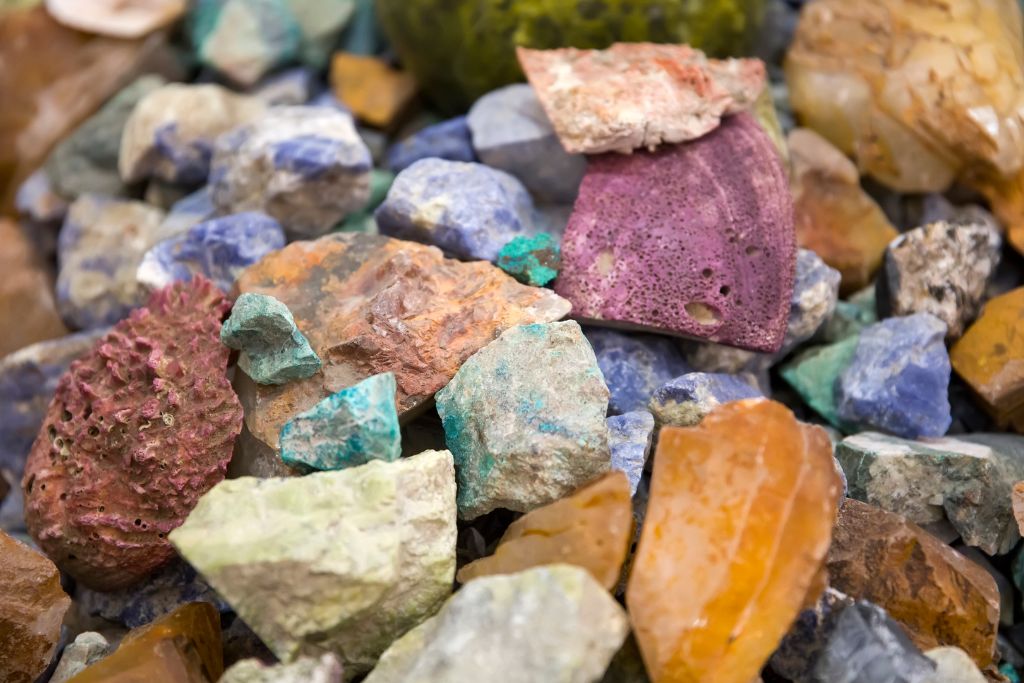
Raw crystals and stones are unprocessed minerals found in the Earth’s crust. They show unique shapes, from small to super-large, with natural indentations, marks, and dust.
Raw crystal meaning is energy.
Did you know raw stones are more valuable to some people than their polished counterparts? If you ask me, it’s not the virginity of the crystal that’s potent or different, but the user’s energies from karma, experience, and horoscopes.
Raw stones have a natural connection with the aura and spirit of the user. The good thing is that tumbled stones share almost the same energies as rough stones. In some cases, however, tumbling can remove essential minerals and energies.
Some interesting shapes and formations naturally seen in raw crystals are cubic, spherical, druzy, Elestial, rosette, seer, phantom, botryoidal, geode, chips, floaters, nodule, twin, cluster, orbicular, stair-stepped, and cathedral.
What is a Tumbled Crystal?
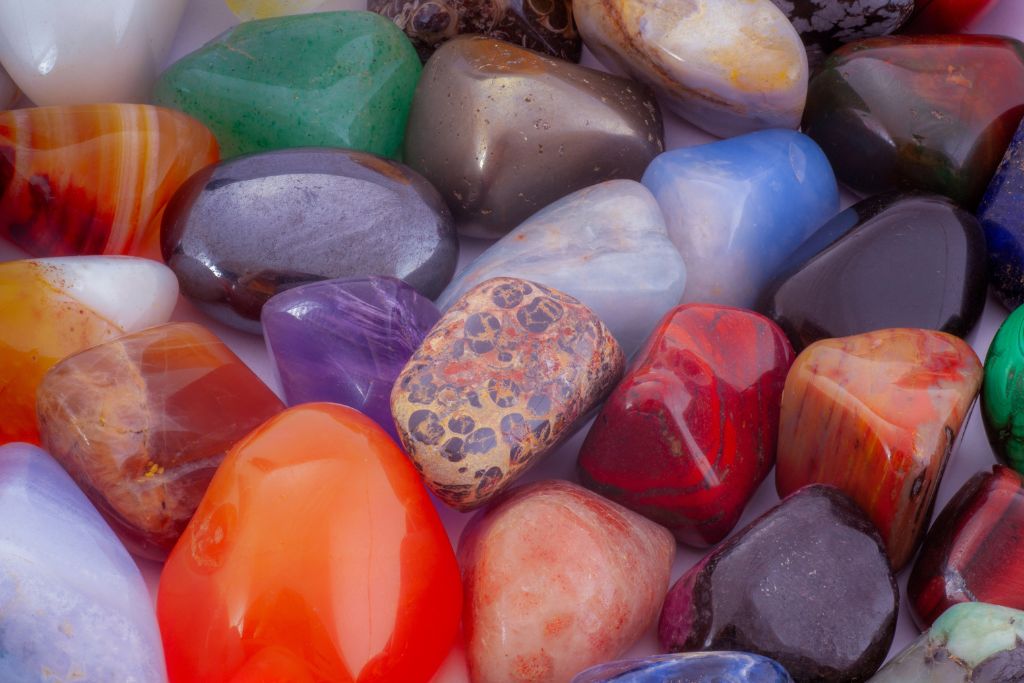
Tumbled stones are smoothed, polished versions of rough stones. They are processed with rock tumblers using water, grit, and polish for several days to weeks or months. Tumbling reveals and enhances the crystal’s colors, layers, and natural traits.
As it’s not hand-cut, crystals above 7 on the Mohs hardness scale are usually tumbled. Those on the lower side aren’t because they tend to break or wear down quickly in rock tumblers.
Tumbled stone meaning is stability. They’re usually flatter, rounder, angular, oval, faceted, or pyramidal.
Professionals can tumble and cut stones in several ways to flatter their traits and appearance in the tumbling process.
Grit and polish used in the tumbler can also make a huge difference to the appearance and value of the stone. Tumbling is also good for removing scratches, sharp edges, and flaws.
Interesting Similarities and Differences in Tumbled vs. Raw Crystals
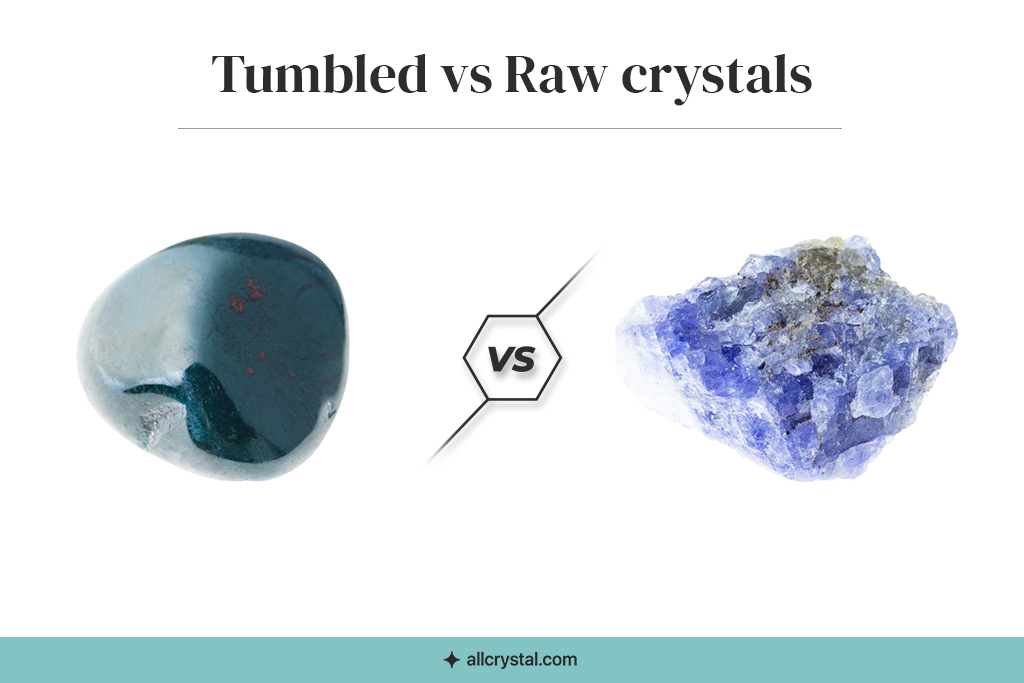
Now you know what raw crystals and tumbled stones are, it’s time to discover their similarities and differences.
1. Same Origin
While tumbled stones are processed through a tumbler, they have the same origin as rough crystals. The Earth is where natural crystals come from.
Some are found on the ground, others from veins of other crystals, minerals, or metal deposits. Not all tumbled stones have synthetic origins, nor do all raw crystals have natural origins.
Pro Tip: Crystal shops, sales, and exhibitions that sell raw stones often have tumbled stones, too.
2. Different Colors
Raw stones and their tumbled equivalents show different colors because tumbling highlights and polishes the natural traits of a crystal. Rough crystals are preserved in their natural forms and have a dull or weathered appearance.
Tumbling removes the outer layers of the stone, depending on how long it was kept in the tumbler. In some cases, the inner layer of a crystal might show a more pronounced color.
On the other hand, rough crystals show the same color as other weathered stones. Some raw stones can continue growing after they’re found, like Bronzite.
Pro Tip: Tumbling brings out a better color in almost all stones.
3. Same Hardness
Raw and tumbled varieties of the same stone share its hardness.
Although many physical traits, like outer colors and specific gravity, slightly change with tumbling, properties like hardness and color stay the same. If you use abrasive grits, however, tumbling may enhance other layers without affecting the hardness of the stone.
Pro Tip: Tumbling doesn’t decrease the hardness of the stone. Did you know crystals with 6 or lower Mohs hardness are rarely tumbled because they crack and shatter?
4. Different Texture
Rough crystals have erratic or uneven faces. Sometimes, they exist with other crystals. They retain the natural texture and matrix or host rock.
On the other hand, tumbled stones undergo weeks or months of tumbling to get a smooth and shiny texture all over.
Pro Tip: Many crystals are rated based on their texture, and those with a smooth texture are often recommended for charging and uneven texture for clearing.
5. Same Metaphysical Benefits
There are no differences in the healing properties of raw and tumbled stones because tumbling doesn’t affect the metaphysical traits of the stone.
Pro Tip: The spiritual community is divided about the metaphysical benefits of raw vs. tumbled stones. I tend to side with inclusivity, so believe in your gut and intuition the most.
6. Different Shape
Tumbled crystals don’t have sharp edges like raw crystals because every side gets smoothened in the tumbler. Raw crystals may be sharp, indented, bumpy, jagged, lumpy, irregular, and dull unless the crystal is naturally smooth.
Pro Tip: Rough stones may show cubic, pyramidal, rosette, blade, and fishtail shapes, while tumbled stones are flat, spherical, oval, pyramidal, hexagonal, faceted, or rounded shapes.
7. Same Mineral Composition and Patterns
Tumbling doesn’t change the mineral composition of the stone into another mineral or crystal, as it doesn’t affect the crystal’s internal structure. Raw and tumbled stones retain the same patterns unless it’s a geode or nodule.
Pro Tip: Some inclusions and layers with trace impurities can be removed during tumbling.
8. Different Handling
The handling technique of raw crystals differs from its counterparts because they need to be cleaned, whereas tumbled stones are ready to go.
Raw crystals are irregular with sharp exteriors and must be handled carefully. They contain toxic dust or unwanted rocks, which you must remove before personal use.
Wear a mask when handling dusty crystals, no matter if they’re raw or tumbled. You should also wear masks when opening packages with new crystals, especially if you buy them in bulk.
Pro Tip: Raw crystals are more toxic than tumbled stones because they contain more dust and broken pieces of the stone.
9. Same Toxicity
If a crystal is toxic, it retains the toxicity from its raw form into tumbling. Tumbling does not reduce or eliminate the toxicity of a healing crystal.
Some crystals shouldn’t be touched, and others have restrictions about usage in water, salt, heat, sunlight, etcetera.
Pro Tip: Learn about the toxicity of your crystals in this post on 105 dangerous crystals.
10. Different Cost
Raw crystals are cheaper than tumbled stones. It’s higher in the latter due to the seller’s tumbling, cutting, polishing, or faceting charges.
Did you know raw crystals lose 20% to 30% of themselves during tumbling? The polishing price tag in healing crystals includes the weight of the crystal wasted during cutting and polishing.
Raw crystals are cheaper in their weight than tumbled alternatives.
Pro Tip: Some crystals are more valuable with their natural shapes and formations than their tumbled counterparts.
11. Same Usages and Applications
Raw crystals and tumbled stones are used in the same way. If you’ve been using raw crystals for feng shui, there’s no harm in substituting them with tumbled stones.
Both varieties are used in jewelry, especially wire wrapping, yet the tumbled shape is more commonly used than the raw form in jewelry.
Pro Tip: Use tumbled stones in your crystal grid and altars for stability.
12. Different Sizes
Raw stones come in small to large, extra-large, and gigantic sizes, while tumbled stones are usually palm-sized. A large crystal may generate more healing energy than its tumbled alternative.
Pro Tip: Diversify energies on your crystal grids by using crystals of different shapes.
13. Same Requirements and Maintenance
No matter the crystal’s shape or color, you must clear its negativity and leftover energies. You must also charge the crystal, regardless of its shape.
Pro Tip: If you have a Clear Quartz or a Selenite, you don’t need to cleanse them as you do others because they’re self-cleansing. Don’t forget to charge or program your crystals before every use!
14. Different Portability and Durability
The portability and durability of raw crystals and tumbled stones vary. Tumbled stones are easy and safer to carry in your purse or pocket, while raw crystals may poke or get damaged in cramped spaces.
Do you love carrying crystals with you? I love taking crystals outside with me to the park, supermarket, and farmer’s market on Thursdays. If you’re like me, go for tumbled crystals because they won’t get damaged.
Pro Tip: Avoid keeping raw crystals on shelves or in spaces with direct sunlight, as many crystals are not safe under prolonged exposure to light and heat from the sun.
15. Optical Features May Change or Remain the Same
Optical traits of a crystal may remain the same or change from raw to tumbled stones based on their composition.
Optical traits, like chatoyancy, asterism, schiller, opalescence, and aventurescence, are enhanced due to the tumbling process. However, traits like fluorescence and pleochroism diminish with tumbling as they lose layers of minerals or impurities that add to their optical phenomena in the stone.
Pro Tip: Check raw stones under different lights and angles before tumbling them.
Tips on How to Use Tumbled and Raw Crystals Safely
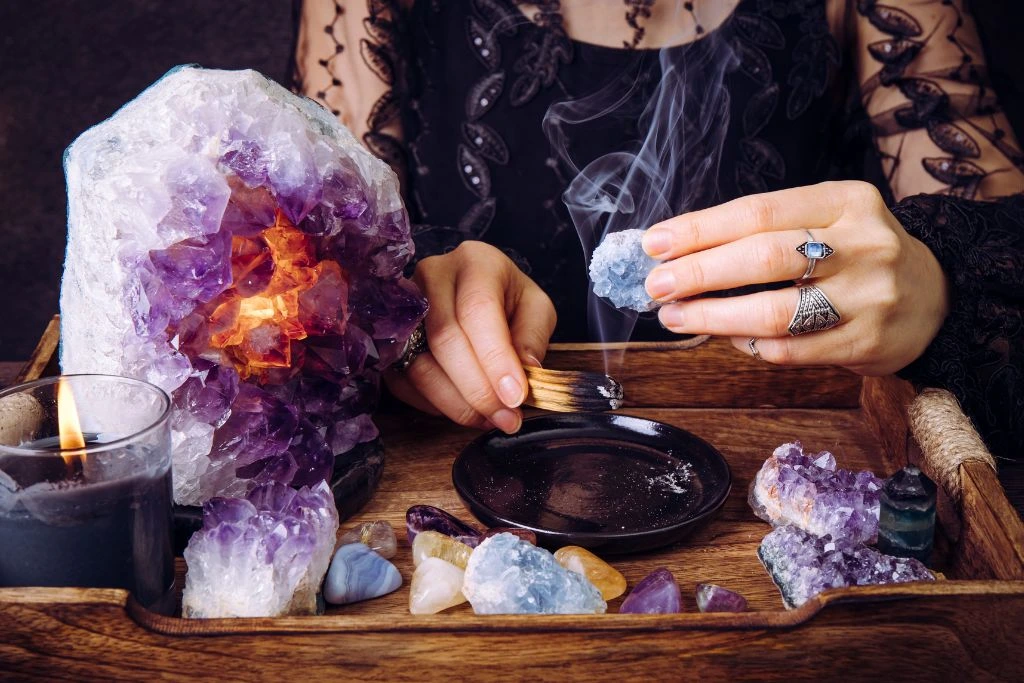
- Do handle new crystals with personal protective equipment, such as sanitizer, mask, gloves, and goggles.
- Don’t use abrasive scourers to clean tumbled and raw crystals.
- Do use a soft cloth or soft-bristle brush to clean your crystals once a month.
- Don’t inhale the dust or ingest the crystals in any form.
- Do keep your crystals separately to avoid scratching them.
- Don’t share your crystals with others unless your intuition tells you to.
- Do keep your raw stones in air-tight boxes and soft surfaces, out of reach from sunlight, heat, rain, and snow.
- Don’t handle broken or cracked crystals without PPE.
- Do cleanse and charge your raw or tumbled crystals before using them.
- Don’t continue to use the crystal if you see any adverse negative effects in your home, family, or life that coincide with its use.
FAQs
Which Is Better and More Effective – Raw or Tumbled Stones?
Raw and tumbled stones have different energies and can be used differently. Their effectiveness mostly varies based on your opinion and the ritual you’re doing. For instance, tumbled stones are good for carrying with you, yet raw stones are for stationary uses.
How To Cleanse and Charge Raw Stones?
Sound, moonlight, incense, smudge sticks, or other crystals are the best ways to cleanse and charge raw stones. You should avoid water, light, heat, soil, and fire with rough stones.
How To Cleanse and Charge Tumbled Stones?
The best ways to cleanse and charge tumbled stones are sunlight, singing bowls, moonlight, incense, smudge stick, meditation, and soil. You can place a handful of tumbled stones to replace a raw crystal for aesthetics, decor, or feng shui.
What To Pick – Raw or Tumbled Stones?
Pick the stone based on your purpose and ritual. Raw stones complement crystal grids and altars, while tumbled stones are great for wire wrapping and decor because they have a consistent shape and weight.
Can All Raw Stones Be Tumbled?
No, raw stones with Mohs hardness above 7 are usually tumbled. It’s also avoided for raw stones with grainy, brittle, or sandy textures.
What Are the Best Ways To Use Raw and Tumbled Stones?
You can use raw and tumbled stones for meditation, yoga, feng shui, charging, home decor, grids, altars, and your garden.
Final Verdict: Raw vs. Tumbled Stones
Raw stones are unpolished and untouched by machines, while tumbled stones undergo weeks or months of polishing to become smooth on all sides. Neither is better than the other because they contain unique and powerful energies.
Tumbled stones show more pronounced color than rough stones, and raw stones have more shapes.
When using them, the most important thing to remember is to base them on your purpose, intention, and ritual. Remember that the energy of each crystal is unique, so prepare and welcome every crystal based on your gut feeling.
Raw crystals mean untapped potential, and tumbled crystals meaning is stability.
Here’s a quick look at what we learned about raw vs. tumbled stones:
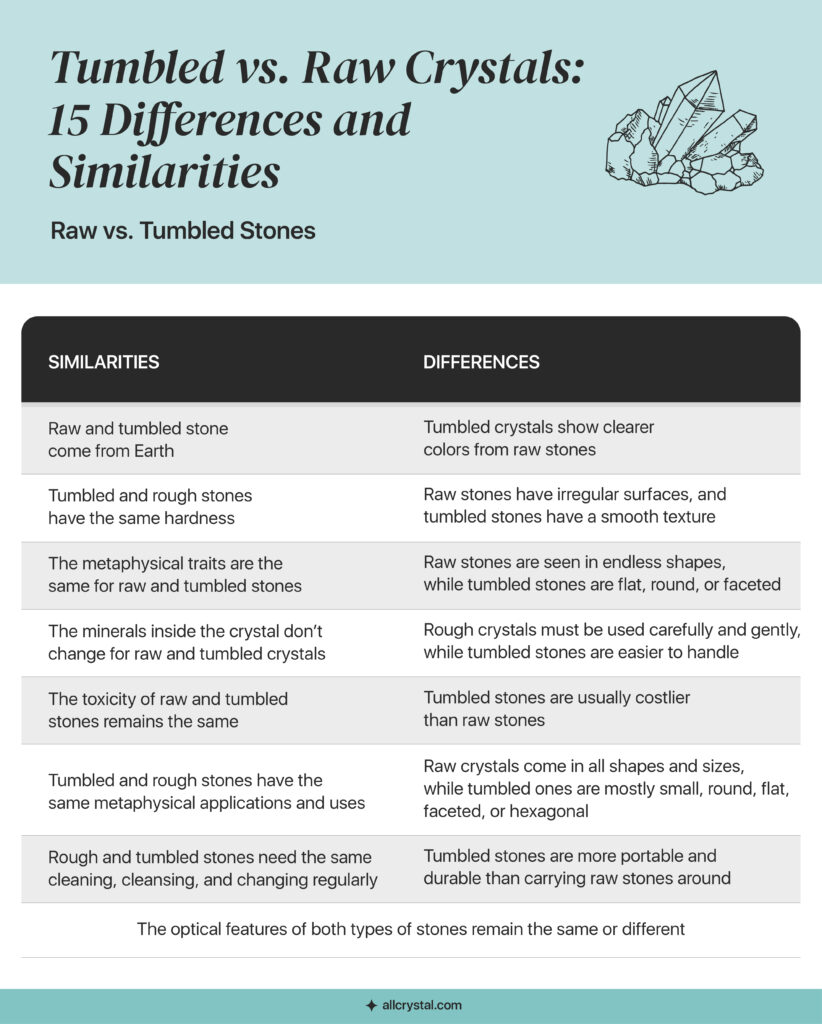
Above all, follow your intuition to discover new metaphysical properties and benefits of raw and tumbled stones. So, which do you prefer – raw or tumbled stone?


